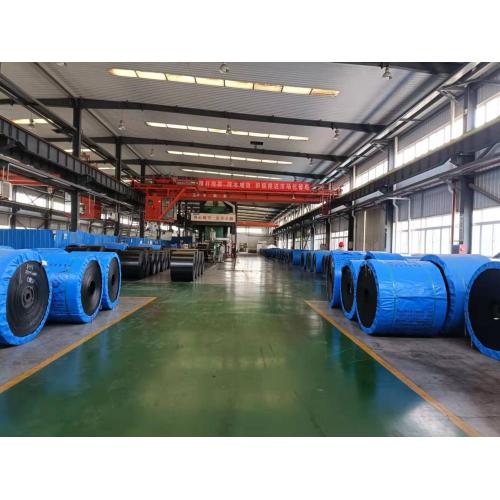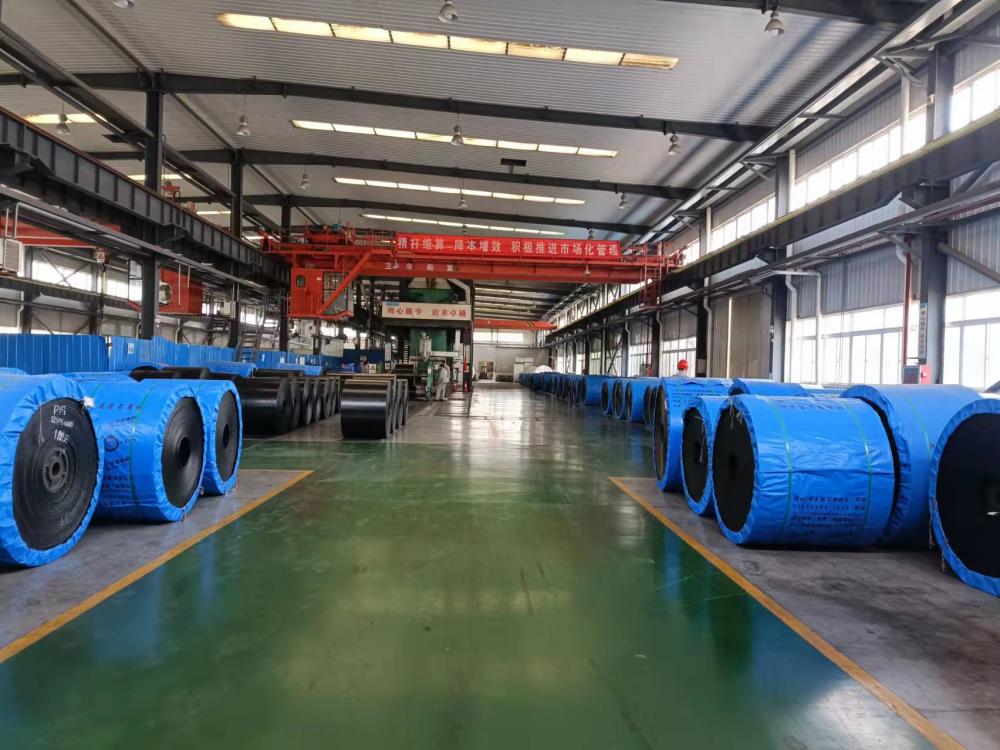




Min. Order:100 Meter
Transportation:Ocean
Port:Shanghai Port,Ningbo Port,Qingdao Port
$20≥100Meter
Model No.: TT-S006
Brand: Iron Tower
Place Of Origin: China
Processing Service: Moulding, Cutting
Brand: Iron Tower
After-sales Service: Online Technical Support, Onsite Training
Warranty Service: See the corresponding standard or executed according to the contract requirements
Shape: Roll
Packaging: UV protection packaging cloth
Productivity: Month supply capacity of 50000
Transportation: Ocean
Place of Origin: China
Supply Ability: Month supply capacity of 50000 meters
Certificate: ISO9001:2015
HS Code: 40101200
Port: Shanghai Port,Ningbo Port,Qingdao Port
PVG1800S Solid Woven Conveyor Belt – High-Performance Flame-Retardant Solution for Mining and Industrial Applications
Engineered for demanding environments, the PVG1800S Solid Woven Conveyor Belt delivers exceptional durability, safety, and efficiency in high-angle conveying operations. Designed specifically for underground mining sectors where fire resistance and static dissipation are critical, this belt meets stringent international standards such as MT914-2019, ensuring compliance with coal mine safety regulations worldwide. Its robust construction combines lightweight design with superior tensile strength, making it ideal for applications requiring reliable material transport under challenging conditions.
Key Features:
Detailed Description: The PVG1800S conveyor belt is a premium-grade, solid weave rubber belt designed for heavy-duty industrial use. Unlike conventional belts, its advanced fabric structure offers improved flexibility while maintaining structural integrity over extended periods. The flame-resistant outer layer—typically made from polyvinyl chloride (PVC) or polyvinyl chloride-based compounds—is formulated to self-extinguish when exposed to open flame, significantly reducing fire propagation risks. This makes it particularly suitable for underground mining, tunneling projects, and other confined spaces where fire safety is paramount. Additionally, its anti-static surface prevents dangerous charge accumulation during operation, which is crucial in explosive atmospheres.
Application Scenarios: Ideal for inclined conveyors in coal mines, quarries, and bulk handling facilities, the PVG1800S supports angles up to 20° in wet conditions when using the PVG variant, and up to 16° for dry settings with the PVC version. It excels in transporting materials like coal, ore, aggregates, and minerals across long distances without slippage or excessive wear. Because of its high friction coefficient, it performs reliably even on steep gradients where traditional belts may fail due to insufficient grip. Whether used in vertical shafts, inclined tunnels, or outdoor stockpile systems, this belt ensures consistent performance and reduced downtime.
User Feedback: Industry professionals consistently praise the PVG1800S for its longevity and safety enhancements. Operators report fewer incidents of belt misalignment and lower energy consumption compared to older models. Maintenance teams appreciate the ease of inspection and the absence of frequent splice failures—a common issue with improperly joined belts. Overall, users highlight the belt’s ability to maintain tension consistency and minimize water-related drag, contributing to smoother workflow and higher productivity in continuous mining operations.
Frequently Asked Questions:
Can the PVG1800S be used in non-mining industries?
Yes, while primarily developed for coal mining, its flame-retardant and anti-static qualities make it applicable in any industry involving combustible materials or explosive dust environments, such as chemical processing, grain handling, or recycling plants.
Is it safe to connect different specifications of belts together?
No, mixing levels, types, or models can cause uneven stress distribution, leading to premature failure or slippage. Always use matching belts of the same specification to ensure optimal performance and safety.
What distinguishes PVG from PVC versions?
PVG offers enhanced fire resistance and better adhesion in wet conditions, allowing for steeper inclines (up to 20°). PVC is more cost-effective for dry environments and supports inclines up to 16°. Choose based on your operational environment and safety requirements.